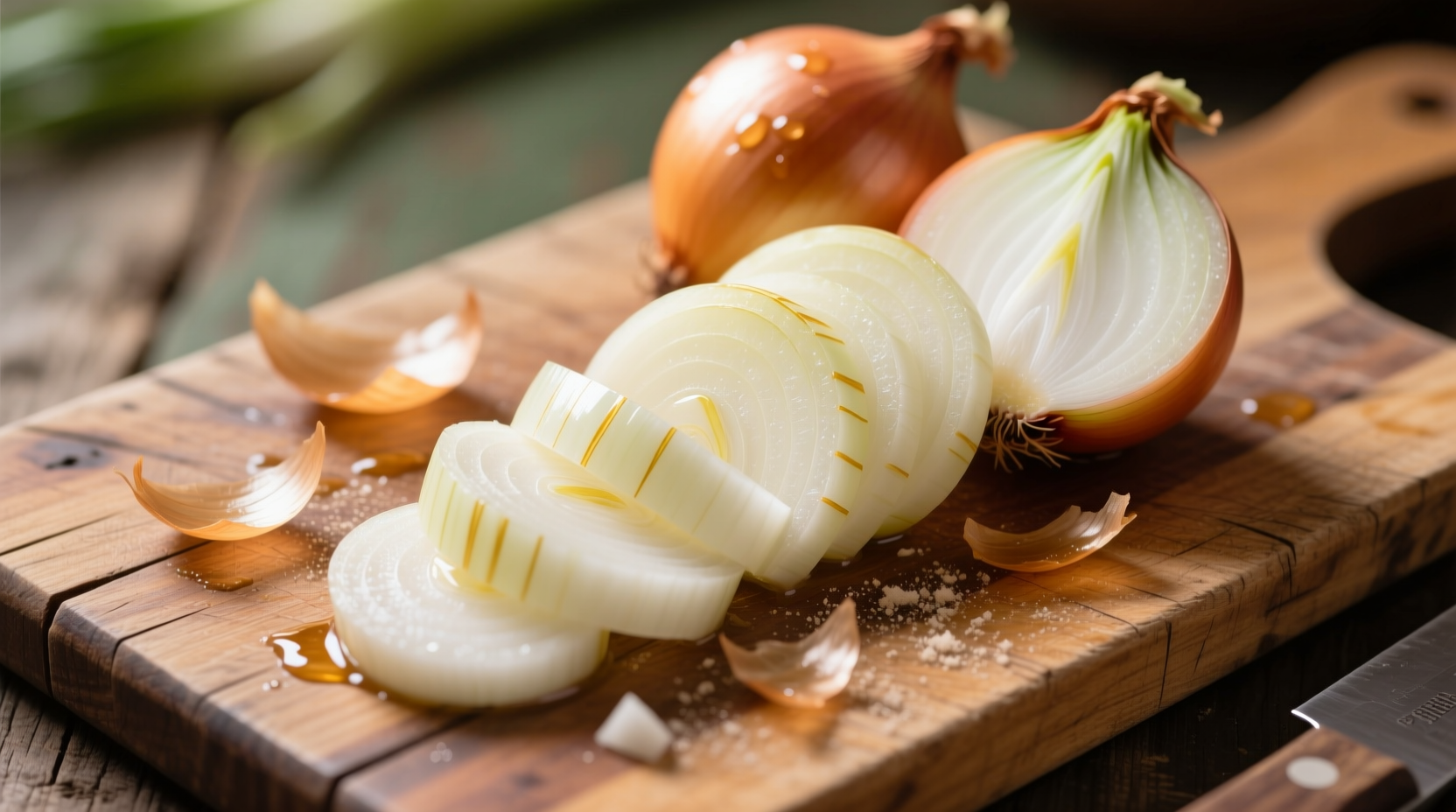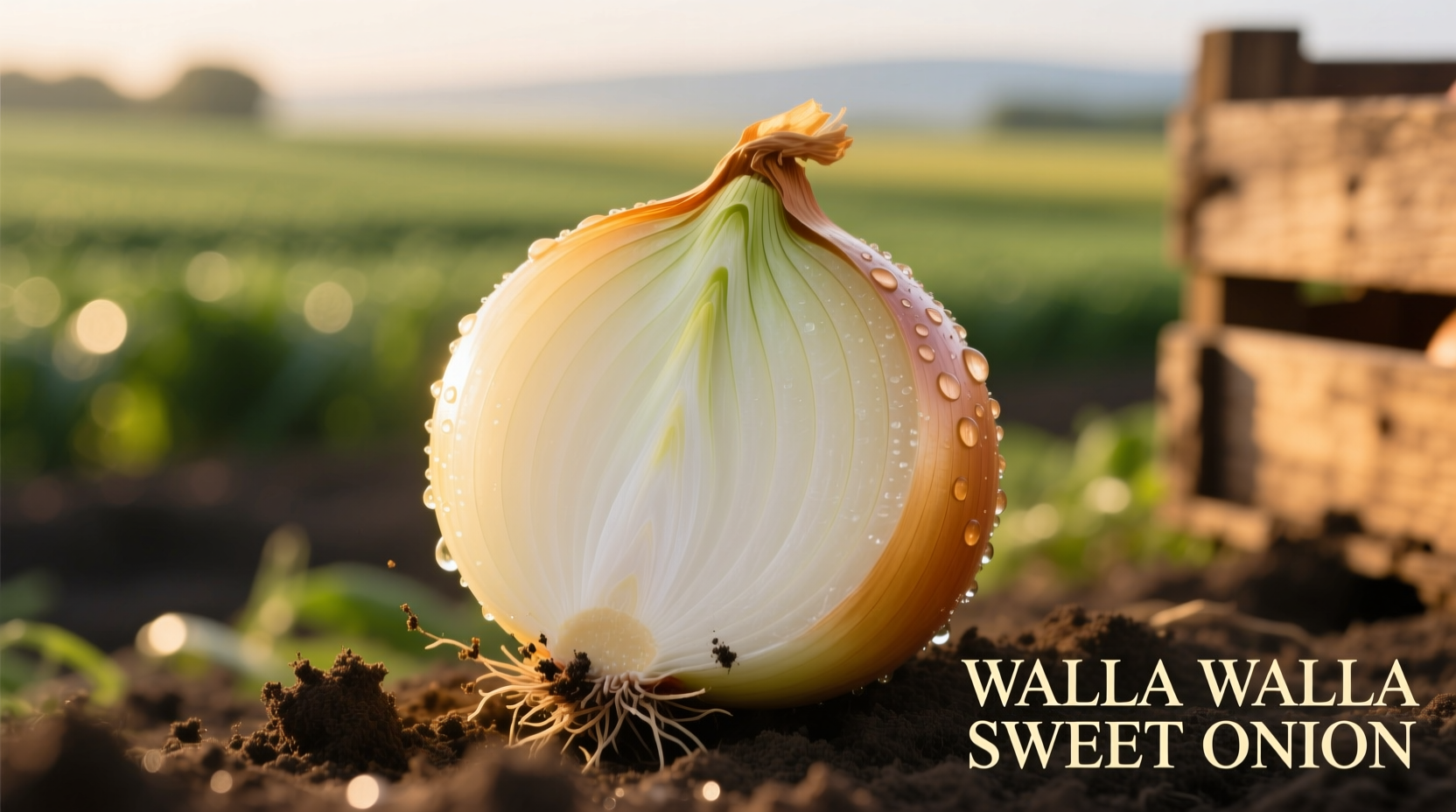Walla Walla sweet onions are exceptionally mild, large, flat-shaped onions grown exclusively in the Walla Walla Valley of Washington state. With less than 5% pyruvate (compared to 8-10% in yellow onions), they deliver a uniquely sweet flavor that makes them perfect for raw applications like salads, sandwiches, and salsas without causing tears or overpowering other ingredients.
Discover why chefs and home cooks prize these seasonal gems from May through August. This guide reveals exactly what makes Walla Walla sweet onions special, how to identify authentic ones, and the best culinary applications for their delicate flavor profile.
What Sets Walla Walla Sweet Onions Apart From Regular Onions
Walla Walla sweet onions aren't just another variety—they represent a specific agricultural product with protected status. Grown only in the Walla Walla Valley of Washington state, these onions benefit from the region's unique volcanic soil and climate conditions that produce their signature mildness.
Unlike standard yellow onions with their sharp bite, Walla Walla sweet onions contain significantly less sulfur compounds. This chemical difference translates to a genuinely sweet flavor that works beautifully in raw preparations where regular onions would overwhelm other ingredients.
| Onion Type | Pyruvate Level | Best For | Season |
|---|---|---|---|
| Walla Walla Sweet | <5% | Raw applications, grilling | May-August |
| Vidalia | 5-6.5% | Raw applications, sandwiches | March-May |
| Yellow Storage | 8-10% | Cooking, caramelizing | Year-round |
| Red Onion | 7-9% | Salads, pickling | Summer-fall |
This chemical composition difference explains why Walla Walla sweet onions won't make you cry during preparation. According to research from Washington State University's agricultural extension, the lower pyruvate content directly correlates with reduced lachrymatory effect—the chemical reaction that causes tearing when cutting onions.
From Battlefield to Farm: The Walla Walla Sweet Onion Timeline
The story of Walla Walla sweet onions begins with a French soldier named Peter Pieri who brought sweet onion seeds from Corsica to Washington Territory in 1918. These seeds adapted remarkably well to the volcanic soil of the Walla Walla Valley, creating what would become a regional specialty.
- 1918: Peter Pieri brings Corsican sweet onion seeds to Walla Walla Valley
- 1980s: Farmers begin marketing "Walla Walla Sweets" locally
- 1996: Walla Walla Sweet Onion Marketing Committee forms
- 2007: Receives Washington State certification mark protection
- 2020: Annual production reaches 15,000 tons during peak season
Unlike European geographical indications, Walla Walla sweet onions operate under a state certification mark rather than federal protection. This means only onions grown in the designated area of Walla Walla Valley and meeting specific quality standards can legally carry the "Walla Walla Sweet Onion" name, as verified by the Walla Walla Sweet Onion Committee.
How to Find Authentic Walla Walla Sweet Onions
True Walla Walla sweet onions appear in markets from late May through August, with peak availability in June and July. During the off-season, be wary of imposters—many sellers mislabel other sweet onion varieties as Walla Wallas.
Look for these authenticating features:
- Distinctive flat shape with pale golden skin
- Large size (typically 2.5-3.5 inches in diameter)
- Official certification logo on packaging
- Grown exclusively in Walla Walla Valley, Washington
According to the USDA Agricultural Marketing Service, authentic Walla Walla sweet onions must meet specific size, shape, and quality standards to bear the certification mark. The committee conducts random market checks to ensure compliance with these standards.

When Walla Walla Sweet Onions Shine (And When They Don't)
Understanding the context boundaries of Walla Walla sweet onions helps you use them effectively. Their high water content (88% compared to 83% in yellow onions) creates both advantages and limitations in the kitchen.
Best applications:
- Raw preparations where mild flavor is essential
- Grilled onion slices (they caramelize beautifully)
- Thinly sliced in burgers and sandwiches
- Fresh salsas and pico de gallo
- Quick-pickled for salads and tacos
Limited applications:
- Long cooking processes (they can become too soft)
- Recipes requiring strong onion flavor
- Extended storage (they last only 2-3 weeks refrigerated)
Professional chefs at the Culinary Institute of America note that Walla Walla sweet onions work best when their delicate flavor can shine without competition. Their low sulfur content means they won't dominate a dish the way yellow onions would, making them ideal for subtle flavor enhancement.
Maximizing Flavor: Storage and Preparation Tips
Proper handling preserves the delicate flavor of Walla Walla sweet onions. Unlike storage onions, they have a relatively short shelf life due to their high water content and thin skin.
Follow these professional tips:
- Store in refrigerator crisper drawer in mesh bag (not plastic)
- Use within 2-3 weeks for peak flavor
- Cut just before use (they oxidize faster than regular onions)
- Chill before cutting to minimize any remaining pungency
- Soak sliced onions in ice water for 10 minutes for maximum crispness
When cooking with Walla Walla sweet onions, remember their high water content means they'll release more liquid than regular onions. For caramelizing, cook them over medium heat with a pinch of salt to draw out moisture more efficiently. The Washington State Department of Agriculture recommends using stainless steel knives to prevent flavor alteration during preparation.
Nutritional Profile: More Than Just Flavor
While prized for their taste, Walla Walla sweet onions also offer nutritional benefits. They contain quercetin, a flavonoid antioxidant with anti-inflammatory properties, though slightly less than yellow onions due to their lower sulfur content.
Per 100g serving, Walla Walla sweet onions provide:
- 40 calories
- 9g carbohydrates
- 1.7g fiber
- 8% daily value of vitamin C
- Traces of calcium, iron, and potassium
Research published in the Journal of Agricultural and Food Chemistry confirms that while sweet onions contain slightly fewer beneficial compounds than pungent varieties, their mild flavor encourages greater consumption in raw form, potentially increasing overall dietary intake of onion-based nutrients.











 浙公网安备
33010002000092号
浙公网安备
33010002000092号 浙B2-20120091-4
浙B2-20120091-4